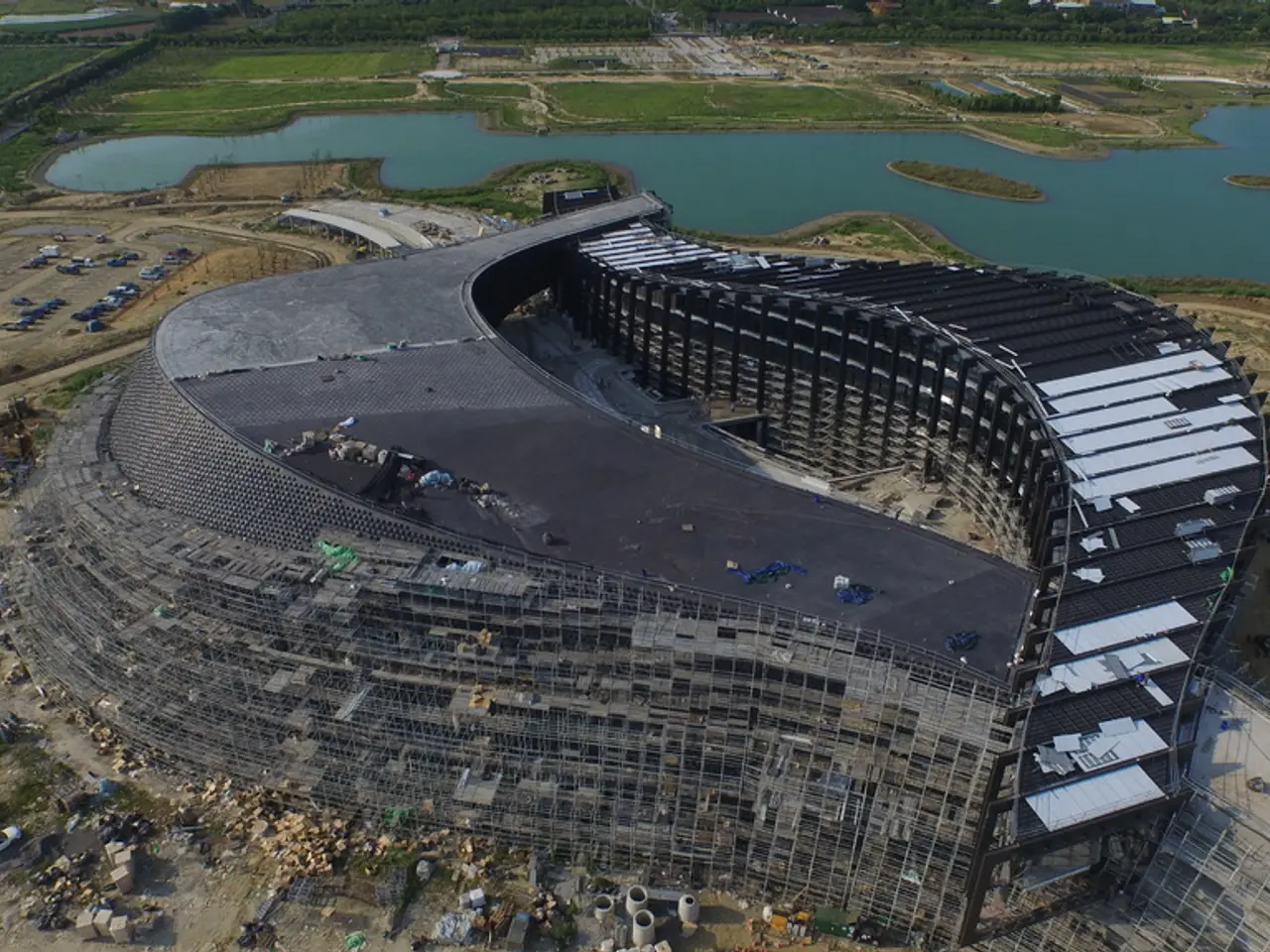Revised California housing reform's impact on construction of residential properties
California Governor Gavin Newsom has pushed through significant reforms to the California Environmental Quality Act (CEQA), aiming to streamline the review process for housing projects and address the state's housing shortage [1][2]. The reforms, encompassed in AB 130 and AB 131, target infill housing in urban areas, exempting such projects from extensive CEQA review under certain conditions [1].
**Accelerating Housing Construction**
The reforms aim to remove the risk of lengthy CEQA lawsuits, a common barrier to housing development in California [2]. By exempting infill housing projects of up to 20 acres in urban zones from the extensive review, provided they comply with zoning rules and avoid sensitive habitats or historic structures, the reforms are expected to speed up housing construction [1].
**Reducing Costs and Bureaucracy**
The reforms also aim to cut costs and bureaucratic delays for developers by simplifying environmental review requirements [1][2]. In some cases, this may involve limiting reviews to specific failed conditions rather than a full environmental analysis.
**Addressing Housing Scarcity**
Supporters of the reforms, including Governor Newsom and development experts, view them as a "game changer" that will help alleviate California’s housing shortage by enabling faster and more cost-effective construction, supporting affordability and availability for residents [2][3].
**Environmental Concerns**
Environmental groups strongly oppose the reforms, arguing they represent a dramatic rollback of crucial environmental safeguards. These organizations warn that the changes undermine protections for California’s vulnerable landscapes, wildlife, and communities by exempting many developments from comprehensive environmental review [3].
**Potential Long-Term Environmental Harm**
Critics contend that removing CEQA oversight risks unchecked environmental degradation, including habitat loss and insufficient mitigation of impacts that the original law was designed to prevent [3]. The reforms highlight the tension between the urgent need to increase housing supply and the imperative to safeguard environmental quality.
**Impact on Housing and the Environment**
The reforms are expected to accelerate housing development in urban infill areas, directly addressing barriers that have suppressed homebuilding [2]. However, this acceleration may come at the cost of diminished environmental oversight, potentially leading to adverse effects on ecosystems and community environments if not carefully managed [3].
In summary, the CEQA reforms signed by Governor Newsom aim to boost housing construction by simplifying or waiving environmental reviews for many urban projects. Supporters say this breaks down longstanding barriers, while opponents warn of substantial environmental risks and loss of important protections. The reforms reflect a deep divide over how best to address California’s intertwined housing and environmental challenges [1][2][3].
References: [1] California Newsroom. (2022, August 30). California's CEQA reforms: What's in the new bills and why they're controversial. Retrieved from https://californianewsroom.org/2022/08/30/californias-ceqa-reforms-whats-in-the-new-bills-and-why-theyre-controversial/
[2] Vartabedian, Ralph. (2022, June 28). California's housing shortage: Newsom signs bill to speed up construction. Los Angeles Times. Retrieved from https://www.latimes.com/california/story/2022-06-28/californias-housing-shortage-gov-gavin-newsom-signs-bill-to-speed-up-construction
[3] Vartabedian, Ralph. (2022, August 30). California's CEQA reforms: What's in the new bills and why they're controversial. Retrieved from https://californianewsroom.org/2022/08/30/californias-ceqa-reforms-whats-in-the-new-bills-and-why-theyre-controversial/
- The controversial CEQA reforms, supported by Governor Newsom and signed into law, are anticipated to impact California's real estate market significantly, as they aim to expedite housing construction in urban areas.
- These reforms, initiated to address California's housing shortage, may result in a reduction in government oversight, potentially affecting the environment through increased infrastructure development without proper assessment.
- In Los Angeles, the business community is keeping a close eye on these reforms, eager to see if they will lead to a surge in real estate investment and development due to streamlined processes.
- Simultaneously, environmental groups are voicing their concern over the potential long-term harm to the environment and the loss of important environmental safeguards, stating that the reforms could have severe impacts on the state's vulnerable landscapes and wildlife.
- As the debate over California's CEQA reforms continues, it highlights the complex interplay between politics, law, and economics, and underscores the challenges faced when balancing growth and development with environmental protection.







